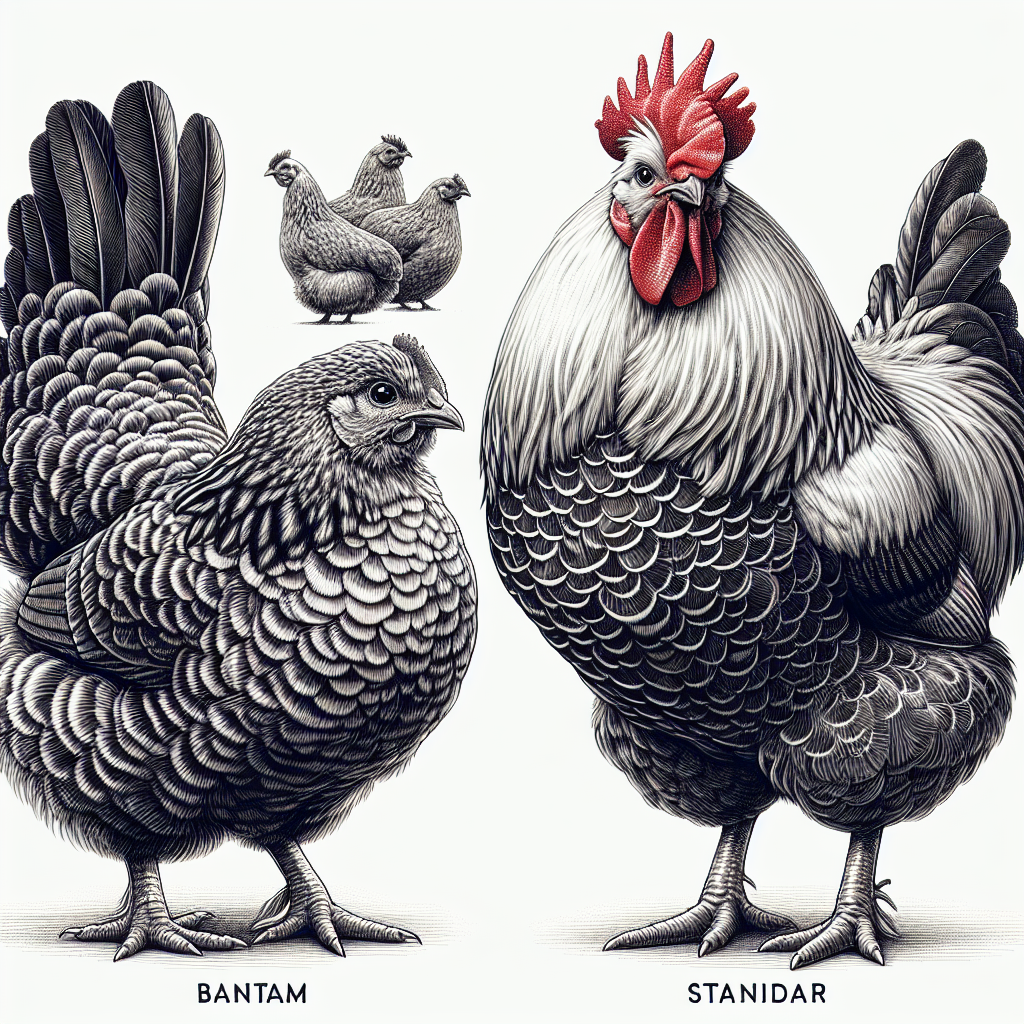In a world where understanding and compassion are essential, addressing bullying or aggressive behavior is crucial in maintaining a harmonious environment. Whether it’s in the workplace, schoolyard, or even amongst a group of friends, no one should have to endure such negative behavior. This article discusses effective strategies and practical tips on how to confront and address these issues in a friendly and constructive manner, ensuring a safer and more inclusive space for everyone involved. So, let’s explore the various approaches to addressing bullying or aggressive behavior within a flock and foster a more positive and supportive atmosphere.
Understanding Bullying and Aggressive Behavior
Definition of bullying
Bullying in a flock refers to a behavior where one or more birds consistently target and harass another individual. This behavior can be physical, such as pecking or chasing, or psychological, such as exclusion from food or perch space. Bullying can lead to physical harm, stress, and reduced well-being for the victimized bird.
Types of aggressive behavior
Aggressive behavior in a flock can take various forms. Some common types include pecking, chasing, hoarding of resources, and pouncing on or attacking other birds. These behaviors may stem from competition for resources, establishing dominance, or territorial disputes. It’s important to distinguish between normal, healthy dominance behaviors and excessive aggression that can be classified as bullying.
Effects of bullying and aggressive behavior
Bullying and aggressive behavior can have detrimental effects on the overall flock dynamics and individual birds. The victimized bird may experience stress, fear, and physical injuries. In severe cases, bullying can lead to decreased egg production, weight loss, and even death. Additionally, the well-being of the entire flock can be affected, leading to decreased productivity, reduced socialization, and disrupted hierarchy within the group.
Recognizing Bullying and Aggressive Behavior
Observing flock dynamics
To accurately identify bullying and aggressive behavior in your flock, it is crucial to observe their dynamics regularly. Pay attention to interactions between birds during feeding, perching, and exploring their environment. Look for repetitive targeting of a specific bird, aggressive posturing, or excessive displays of dominance. Understanding the natural pecking order and social hierarchies within the flock will help you recognize when behaviors cross the line into bullying territory.
Identifying signs of bullying or aggressive behavior
While recognizing bullying behavior can be challenging, there are certain signs you can look out for. If a particular bird is consistently isolated, has visible injuries, or shows signs of stress such as feather picking or reduced activity, it may indicate that it is being bullied. Other indicators include feather loss, unusual aggressiveness towards humans or other birds, and excessive vocalization. By being attentive to these signs, you can intervene and address the issue promptly.
Addressing Bullying and Aggressive Behavior
Taking immediate action
When encountering bullying or aggressive behavior in your flock, it is vital to take immediate action to protect the victimized bird(s) and restore harmony within the group. Firstly, separate the bully from the victim to prevent further harm. Provide a safe and comfortable space for the victimized bird, ensuring it has access to food, water, and shelter away from the bully. This temporary separation will minimize stress while you work on implementing preventative measures.
Implementing preventive measures
To address bullying in the long term, it is crucial to implement preventive measures. Make sure there is ample space, perching areas, and feeding stations available to minimize competition and resource hoarding. Additionally, providing environmental enrichment in the form of toys, branches, or dust bathing areas can divert their attention and reduce aggression. Regularly monitor the flock for any signs of bullying and act swiftly to prevent further escalation.
Promoting a positive flock environment
Creating a positive flock environment is essential to minimize bullying behavior. This includes maintaining a consistent routine for feeding, cleaning, and interacting with the birds. Flock members should have access to a varied diet that meets their nutritional needs. Additionally, providing ample opportunity for socialization and mental stimulation through supervised free-ranging or supervised flock activities can promote healthy interaction between birds, reducing the likelihood of bullying.
Interventions and Strategies
Separating the bully and victim
When addressing bullying behavior, separating the bully and victim is a crucial step. This allows the victimized bird to recover and regain confidence while preventing further harm. Time apart can also give the bully a chance to reflect on their behaviors and adjust their interactions with the flock. Consider using temporary enclosures or cages to separate the birds, ensuring they still have access to their necessities.
Teaching adaptive flock behavior
To prevent bullying from recurring, it is important to teach adaptive flock behavior to all birds. This can be achieved through social learning and reinforcement techniques. Encourage positive interactions by rewarding cooperative behavior with treats, praise, or attention. This can help establish new social norms within the flock and discourage acts of aggression. Consistency and repetition will be key in reinforcing these desired behaviors.
Developing assertiveness skills
In some cases, birds may engage in aggressive behavior due to a lack of assertiveness in establishing their place within the flock hierarchy. By providing opportunities for the bullied bird to develop assertiveness skills, you can help them gain confidence and reduce the likelihood of becoming a target. Encourage them to participate in social interactions, provide them with their own space and resources, and ensure they have opportunities to establish their boundaries with the rest of the flock.
Involving the Flock Owner or Manager
Reporting the incidents to the owner/manager
If you are a flock caretaker or employee, it is crucial to report incidents of bullying and aggressive behavior to the flock owner or manager. Keeping open lines of communication ensures that the issue is addressed promptly and effectively. Provide detailed documentation of the incidents, including dates, times, and descriptions of the behavior observed. This will help the owner or manager understand the severity of the issue and develop appropriate solutions.
Collaborating with the owner/manager for solutions
Addressing bullying and aggressive behavior in a flock is a collaborative effort. Work alongside the flock owner or manager to develop strategies and solutions. This may involve modifying the flock’s physical environment, implementing behavior modification techniques, or seeking professional support. By working together, you can create a comprehensive plan that prioritizes the welfare of the flock and promotes a harmonious flock dynamic.
Seeking Professional Support
Consulting a veterinarian or animal behaviorist
If the bullying behavior persists or becomes increasingly severe, it may be necessary to seek professional support. Consult a veterinarian or animal behaviorist who specializes in poultry behavior. They can provide valuable insights into the root causes of aggression within your flock and recommend specific interventions tailored to your unique situation. Professional guidance can ensure that the flock’s physical and mental well-being is adequately addressed.
Joining support groups or seeking advice from experienced flock owners
Joining support groups or seeking advice from experienced flock owners can be another valuable resource when it comes to addressing bullying behavior. Online forums, social media groups, or local poultry associations provide opportunities to connect with others who have encountered similar challenges and have successfully resolved them. Learning from their experiences and implementing their recommendations can contribute to creating a healthier and happier flock.
The Role of Flock Management Practices
The effect of housing and space on bullying behavior
Effective flock management practices play a crucial role in preventing and addressing bullying behavior. The design and layout of the coop and outdoor space should allow for adequate space and movement for all birds. Overcrowding can exacerbate aggression and stress levels, leading to increased bullying behavior. Additionally, providing adequate perching areas and dividing feeding stations can help reduce competition for resources and minimize the risk of bullying.
Feeding strategies to reduce aggression
Implementing strategic feeding strategies can significantly reduce aggression within a flock. Consider spreading out food sources to prevent crowding and hoarding behavior. Provide multiple feeding stations or scatter food in different areas of the coop or yard to encourage individual feeding and reduce competition. This way, each bird has equal access to food without the need for aggressive behavior.
The importance of environmental enrichment
Incorporating environmental enrichment is crucial in minimizing bullying behavior and promoting a healthy flock environment. Offer a variety of opportunities for mental and physical stimulation, such as branches for perching, dust bathing areas, or hanging toys. This not only serves as a distraction from aggressive behaviors but also encourages natural behaviors, reducing stress and providing an outlet for excess energy.
Training and Socialization Techniques
Socializing chicks and young birds
Proper socialization from an early age can significantly influence the behavior and social dynamics of a flock. When raising chicks or introducing young birds to an existing flock, ensure they have sufficient interaction with both humans and their flock mates. Frequent handling, supervised group interactions, and exposure to various environmental stimuli can help birds develop social skills and minimize the likelihood of aggressive behaviors later in life.
Implementing positive reinforcement training
Positive reinforcement training can be an effective tool in shaping desired behaviors in birds. Rewarding cooperative or non-aggressive behaviors with treats, praise, or attention encourages their repetition. This training technique can be applied when working with specific birds displaying bullying behavior or when cultivating a positive flock dynamic as a whole. Regular training sessions and consistent reinforcement help establish long-lasting behavioral changes.
Utilizing distraction and redirection techniques
When observing bullying behavior, distraction and redirection techniques can be used to divert the attention of aggressive birds. Providing toys, mirrors, or novel objects within the flock’s environment can redirect their focus and decrease the likelihood of engaging in aggressive behaviors. Additionally, engaging in supervised activities with the flock, such as foraging or environmental exploration, can help promote positive interactions and discourage aggression.
Implementing Behavioral Observations and Documentation
Creating a behavior log
Creating a behavior log is an essential tool for documenting bullying and aggressive behaviors within a flock. Regularly record observations, including the dates, times, and descriptions of interactions among the birds. This log will help track patterns and triggers of aggressive behavior, as well as assess the effectiveness of implemented interventions. Analyzing these records can guide decision-making and ensure a more targeted approach to addressing the issue.
Recording and analyzing flock interactions
In addition to a behavior log, recording and analyzing flock interactions can provide valuable insights into the dynamics and relationships within the flock. Utilize video or audio recordings to capture the birds’ interactions during feeding, perching, and socialization. By reviewing these recordings, you can identify specific instances of bullying, observe the body language and communication signals of each bird, and gain a deeper understanding of the flock’s social dynamics.
Identifying patterns and triggers
Through careful observation and documentation, you can identify patterns and triggers that contribute to bullying and aggressive behavior within the flock. Analyze the behavior log and flock interaction recordings to identify common circumstances or events that precede aggressive incidents. This can include resource-based triggers, social hierarchy disputes, or specific environmental factors. Understanding these patterns and triggers will aid in developing more effective interventions and preventive measures.
Conclusion
Addressing bullying and aggressive behavior in a flock requires a comprehensive approach that combines understanding, observation, intervention, and collaboration. By recognizing the signs of bullying, taking immediate action, and implementing preventive measures, you can promote a positive flock environment. Interventions and strategies like separating the bully and victim, teaching adaptive flock behavior, and developing assertiveness skills contribute to resolving the issue. Involving the flock owner or manager, seeking professional support and adopting effective flock management practices are essential in creating a safe and harmonious environment. By utilizing training and socialization techniques, implementing behavioral observations and documentation, and recognizing the role of the physical and social environment, you can effectively address bullying and aggressive behavior in your flock, promoting the overall welfare and flock dynamics.




